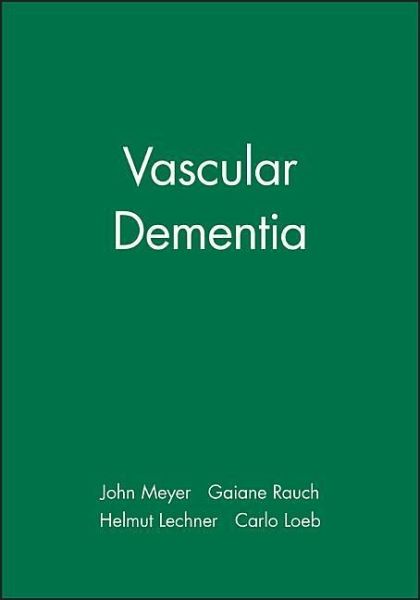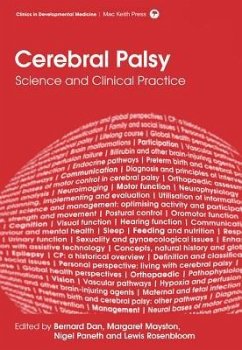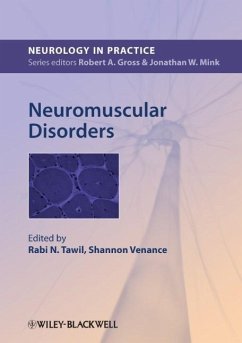
Vascular Dementia
Versandkostenfrei!
Versandfertig in über 4 Wochen
239,99 €
inkl. MwSt.

PAYBACK Punkte
120 °P sammeln!
Vascular dementia (VAD) accounts for one-third of all dementias in today''s aging population, second only to Alzheimer's disease (DAT). Fortunately, current imaging techniques allow clinicians to view specific lesions in the brain, classify them by etiology and anatomical location, and assess changes using serial imaging, while at the same time correlating those changes with signs and symptoms of VAD or DAT. In 17 chapters, this book summarizes new concepts concerning the epidemiology, etiology, risk factors, neuropathology and pathogenesis of VAD and DAT, and mixtures of the two, and reviews ...
Vascular dementia (VAD) accounts for one-third of all dementias in today''s aging population, second only to Alzheimer's disease (DAT). Fortunately, current imaging techniques allow clinicians to view specific lesions in the brain, classify them by etiology and anatomical location, and assess changes using serial imaging, while at the same time correlating those changes with signs and symptoms of VAD or DAT. In 17 chapters, this book summarizes new concepts concerning the epidemiology, etiology, risk factors, neuropathology and pathogenesis of VAD and DAT, and mixtures of the two, and reviews their multiple causes, including microvascular and hemorrhagic lesions, and ischemic and inflammatory changes affecting both white and gray matter. For the first time, the subject of reversible cognitive decline among the elderly is described, and early control of vascular risk factors are described that can improve early cognitive decline and prevent strokes and dementia. Vascular dementia (VAD) accounts for one-third of all dementias in today''s aging population, second only to Alzheimer''s disease (DAT). Fortunately, current imaging techniques allow clinicians to view specific lesions in the brain, classify them by etiology and anatomical location, and assess changes using serial imaging, while at the same time correlating those changes with signs and symptoms of VAD or DAT. In 17 chapters, this book summarizes new concepts concerning the epidemiology, etiology, risk factors, neuropathology and pathogenesis of VAD and DAT, and mixtures of the two, and reviews their multiple causes, including microvascular and hemorrhagic lesions, and ischemic and inflammatory changes affecting both white and gray matter. For the first time, the subject of reversible cognitive decline is described in detail, and early control of vascular risk factors are discussed that can improve, prevent or reverse early cognitive decline and prevent strokes and dementia. Clinical features of patients with VAD are compared to those with DAT, so that similarities and differences in the clinical course of both diseases are apparent. Simple and practical methods for assessing and quantifying cognitive and neurobehavioral deteriorations are discussed, as well as issues for prevention and therapy. Neurologists, vascular surgeons, internists, family practitioners, nurses, rehabilitationists and clinical psychologists will all find this text practical, useful and informative.












